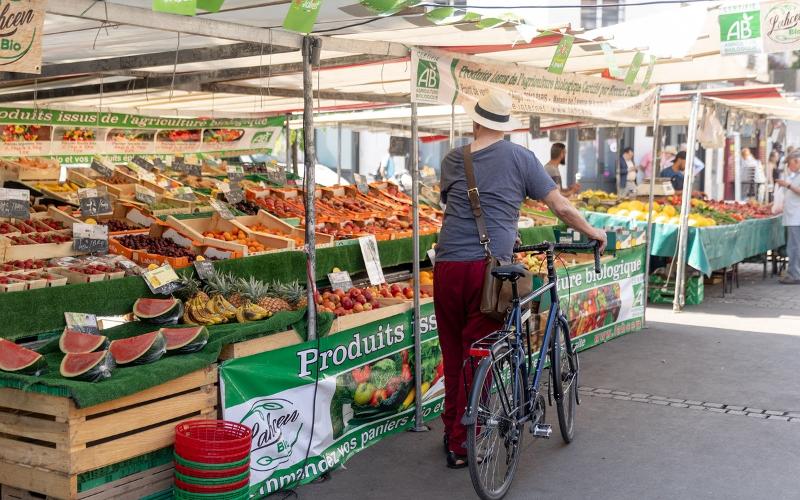In recent years, there has been much talk about the 15-minute city, but what does it really mean? This article explores the origins and principles of this sustainable urban planning concept, debunking conspiracy theories along the way. Join me as we delve into the idea of creating vibrant neighborhoods where everything you need is just a short walk, bike ride, or public transport trip away.
The Origins of the 15-Minute City
Explore the history and evolution of the 15-minute city concept
The concept of the 15-minute city is not as new as it may seem. In fact, it dates back to at least 2008 when the city of Portland, Oregon, embraced the idea of creating communities where essential amenities were within a 20-minute walkable distance.
Since then, other cities like Melbourne and Paris have also adopted variations of the 15-minute city, prioritizing accessibility, sustainability, and community well-being. Let's take a closer look at the origins and principles behind this innovative urban planning approach.
The Principles of a 15-Minute City
Discover the key principles that guide the development of a 15-minute city
A 15-minute city revolves around the idea of creating vibrant neighborhoods where people can access their daily needs within a short distance. This concept prioritizes walking, cycling, and public transportation as the main modes of transportation, reducing reliance on cars and promoting a healthier, more sustainable lifestyle.
Key principles of a 15-minute city include reclaiming car-dominated spaces for community use, upgrading walking and cycling infrastructure, and expanding green spaces in every neighborhood. By focusing on people rather than cars, these cities aim to foster a sense of community, improve quality of life, and reduce greenhouse gas emissions.
Debunking Conspiracy Theories
Addressing the misconceptions and conspiracy theories surrounding the 15-minute city
Despite its positive intentions, the 15-minute city has faced opposition and conspiracy theories. British Transport Secretary Mark Harper, for instance, claimed that it is a plot to establish authoritarian government control and take away personal freedom.
However, these claims are unfounded. The 15-minute city is not about restricting individual choices but rather creating inclusive, sustainable communities. In fact, studies have shown that walkable neighborhoods contribute to better health outcomes, increased happiness, and reduced car dependency.
By debunking these conspiracy theories, we can focus on the true benefits and potential of the 15-minute city in creating livable, equitable urban environments.
Realizing the Vision: Success Stories
Explore cities that have successfully implemented the 15-minute city concept
Several cities around the world have embraced the 15-minute city concept and witnessed positive transformations. Paris, under the leadership of Mayor Anne Hidalgo, has made significant progress in creating a walkable, bikeable city with improved access to essential amenities.
Portland, Oregon, has also made strides in achieving its goal of having 90% of its population living in communities where daily needs are within a 20-minute walkable distance. These success stories demonstrate the potential of the 15-minute city to create more sustainable, livable, and connected urban environments.
The Future of Urban Planning
Looking ahead to the future of urban planning and the role of the 15-minute city
The 15-minute city represents a shift in urban planning towards a more human-centered and sustainable approach. As cities continue to grow and face challenges such as climate change and inequality, the principles of the 15-minute city offer a roadmap for creating inclusive, accessible, and resilient communities.
By prioritizing walkability, cycling infrastructure, and community spaces, cities can reduce congestion, improve air quality, and enhance the overall well-being of their residents. The 15-minute city is not just a concept; it is a vision for a better future where people and the environment thrive together.
Conclusion
The concept of the 15-minute city is not a new conspiracy but rather a human-centered and climate-conscious approach to urban planning. It aims to create vibrant neighborhoods where essential amenities are within a short distance, promoting accessibility, sustainability, and community well-being.
By prioritizing walking, cycling, and public transportation, the 15-minute city reduces reliance on cars, improves health outcomes, and fosters a sense of community. Success stories from cities like Paris and Portland demonstrate the potential of this concept in creating livable, equitable urban environments.
As we look to the future of urban planning, the principles of the 15-minute city offer a roadmap for creating inclusive, accessible, and resilient communities. By embracing this concept, we can build cities that prioritize people and the environment, leading to a better quality of life for all.
FQA :
What is the 15-minute city?
The 15-minute city is an urban planning concept that aims to create neighborhoods where essential amenities are within a short distance, typically a 15-minute walk, bike ride, or public transport trip.
Is the 15-minute city a plot for government control?
No, the 15-minute city is not a conspiracy. It is a human-centered approach to urban planning that prioritizes accessibility, sustainability, and community well-being.
What are the benefits of a 15-minute city?
A 15-minute city promotes healthier lifestyles, reduces car dependency, improves air quality, and fosters a sense of community. It also contributes to the overall well-being of residents and helps mitigate climate change.
Which cities have successfully implemented the 15-minute city concept?
Cities like Paris and Portland have made significant progress in implementing the 15-minute city concept. These cities have improved access to essential amenities, prioritized walking and cycling infrastructure, and created more livable and connected urban environments.
What is the future of urban planning?
The future of urban planning lies in adopting principles similar to the 15-minute city. By prioritizing walkability, cycling infrastructure, and community spaces, cities can create more inclusive, accessible, and resilient communities that thrive both socially and environmentally.

